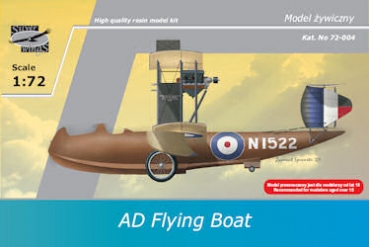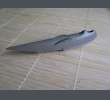AD Flying Boat
-
 Box - RAF
Box - RAF
History
Designed in 1915 by Lieutenant Linton Hope, the aircraft was of conventional biplane flying-boat configuration, and also featured a biplane tail with twin rudders. The pilot and observer sat in tandem in the nose, with the engine and pusher propeller mounted behind them, between the wings. The wings could be folded forwards to facilitate shipboard stowage. Two prototypes were constructed in 1916 by Pemberton-Billing Ltd (later to become Supermarine Aviation). The first prototype was intended to be powered by powered by a 150 hp (112 kW) Sunbeam Nubian engine, but this was not ready with the Hispano-Suiza 8 being substituted. Handling, both on the water and in the air was initially poor, demonstrating severe fore and aft vibration, known as porpoising during take-off, while subject to excessive Yaw during flight. These problems were eventually solved by revisions to the hull and the fin and rudder, allowing the AD Flying Boat to be ordered into production. A total of twenty-seven production machines were built out of orders for eighty, generally powered by 200 hp (149 kW) Hispano-Suiza engines, although examples were tested with Sunbeam Arab and Wolseley Python engines.
Technical data:
Length: 9,32 m
Span: 15,34 m
Power plant: Hispano-Suiza inline engine, 149 kW (200 hp)
Max speed: 161 km/h
Endurance: 4,5 h











